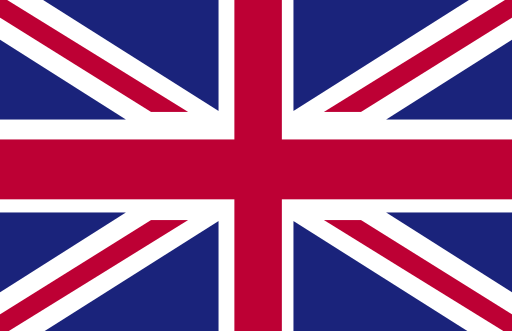Points of sail explained: How to use wind and sailing directions
03 October 2025

One of the most essential skills every sailor must learn is understanding how to use the wind to move their sailboat efficiently and safely through the water. Unlike cars and other vehicles that can drive in any direction, a sailboat’s path is dependent on the wind’s angle to the boat. This relationship is defined by what sailors call the ‘points of sail’.
In this guide, we cover the relationship between the wind and sailing, highlight and explain the different points of sail, provide tips on predicting the weather, and share some useful advice.
Contents
- Wind and sailing: why it matters
- What are points of sail?
- The main points of sail: explained
- Boat directions and wind sailing
- How to predict and use the wind when sailing
- Tips for beginners: learning points of sail
Wind and sailing: why it matters
Wind is integral for sailing as a sailboat can’t move without it. Understanding how wind works and how your boat responds to it is essential for control, speed, and safety while out on the water.
- Wind is caught in the sails, and the force it creates generates the lift that propels the boat forward. The angle of the sails to the wind determines whether you get power or just flapping.
- You can’t sail directly into the wind and must use points of sail – like close-hauled or broad reach – to travel. Sailors must zigzag to go in the direction they want, especially when moving upwind.
- Properly trimmed sails catch the wind efficiently. If they’re too tight or too loose, you’ll lose speed or control.
- The strength and direction of the wind changes often, and sailors need to be able to confidently adjust their sails, heading, and even route based on these changes.
- Strong gusts or sudden wind direction shifts can overpower the boat if you’re unprepared. This can result in accidental jibes, which may cause injury or damage. As a sailor, understanding wind direction helps you avoid dangerous situations, like being blown into shallow water or obstacles.
What are points of sail?
Points of sail are the different directions a sailboat can travel in relation to the direction of the wind. They help sailors understand how to position their sails and steer the boat efficiently. When the wind is coming from a certain direction, depending on how your boat is angled to that wind, you’re on a specific point of sail.
- Different sail angles affect speed, stability, and control
- You can’t sail directly into the wind and must move in a zigzag pattern (tacking)
- Knowing your point of sail helps you trim sails properly and sail safely
The main points of sail: explained
The main points of sail are:
Into the wind
Angle to wind: 0°–30°
You can’t sail directly into the wind. The sails will flap, and the boat will stall. This point of sail is typically avoided unless you’re tacking.
Close-hauled
Angle to wind: 30°–45°
This point of sail involves sailing as close to the wind as possible while the sails are pulled in tight. Close-hauled point of sale is best used for tacking.
Close reach
Angle to wind: 45°–60°
Slightly off the wind, the sails are eased a bit from close-hauled. Close reach is fast, efficient, and often a good point of sail for speed.
Beam reach
Angle to wind: 90°
In beam reach, the wind comes directly across the side of the boat. This is generally the fastest, most stable point of sail.
Broad reach
Angle to wind: 120°
Wind comes from behind at an angle, and the sails are let out further. The broad reach point of sale is fast, comfortable, and good for covering distance.
Running (Downwind)
Angle to wind: 150°–180°
For this point of sail, the wind is directly behind the boat, and the sails are fully out. Sailing downwind can be unstable with a risk of accidental jibe.
Boat directions and wind sailing
Understanding boat directions and how they relate to wind direction is important for safe and efficient sailing.
Sailboats have four directions:
- Bow - front of the boat
- Stern - back of the boat
- Port - left side when facing forward
- Starboard - right side when facing forward
A good way to remember the difference between port and starboard is that ‘port’ and ‘left’ both have four letters.
Wind direction is always referenced relative to the sailboat, and the way it’s angled to the wind determines the point of sail and which side of the boat the wind is hitting.
On starboard tack, wind comes over the right side, and the boom is on the port side. Usually, a boat on starboard tack has right-of-way over a boat on port tack.
On port tack, wind comes over the left side, and the boom is on the starboard side. A sailboat on port tack must give way to a sailboat on starboard tack.
How to predict and use the wind when sailing
Predicting wind conditions and being able to use them to your advantage when sailing is an important skill for all sailors. The following should help:
- Look for trees and flags on the shore that will show wind direction and strength
- Small ripples in the water show light winds, whereas whitecaps signify stronger winds
- Check marine forecasts before and during your trip to stay aware of expected changes
- Feel for shifts in wind strength or direction
- Understand points of sail and adjust your sails depending on wind direction - if the wind picks up, you may need to reef your sails to keep the boat balanced
Tips for beginners: learning points of sail
- Laminate a point of sail chart and stick it to your boat
- Practice tacking back and forth while close-hauled
- Sail on a beam reach to get a feel for trimming and balance
- Stay aware of the direction the wind is coming from, as this will help you to orient without instruments
- Read our guide on learning to sail for more tips
Specialist boat insurance through Craftinsure
Now that you know all about points of sail and when to use them, you might want to think about purchasing specialist boat insurance for your vessel.
Specialist boat insurance through Craftinsure provides up to £5m third-party cover and protects your boat against loss or damage from fire or theft. Get an instant online quote today.
Please note the information provided on this page should not be taken as advice and has been written as a matter of opinion. For more on insurance cover and policy wording, see our homepage.


